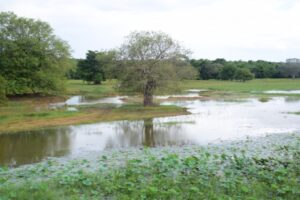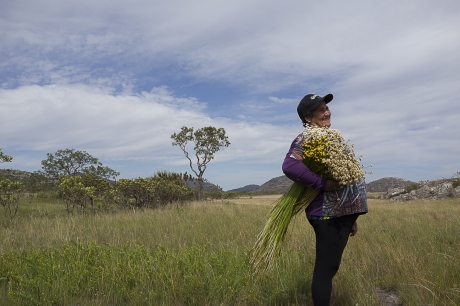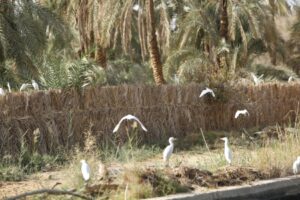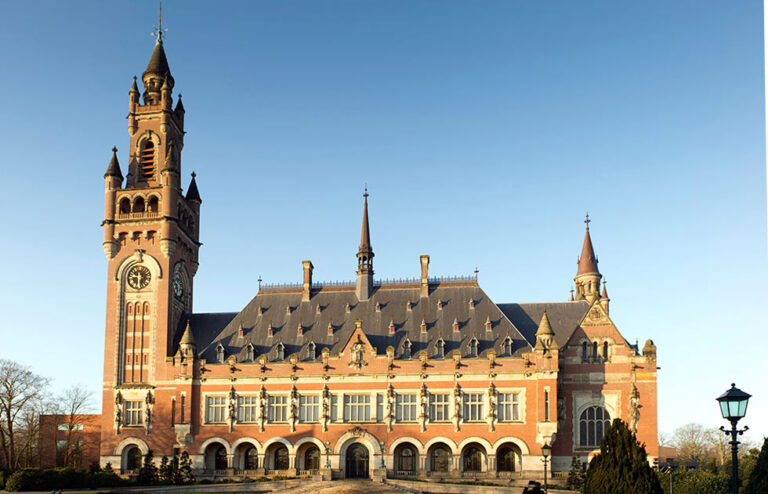
Working in harmony with the environment
In some places, farmers have learned to work in harmony with the environment and use the knowledge passed down over centuries to implement sustainable practices and protect the biodiversity in their surrounding ecosystems.
As it is, biodiversity constitutes an essential element in our global ecosystems and provides the foundation for agricultural practices and food production. It is essential to our well-being and food security, but it is often threatened by our activities.
These farmers and rural communities have envisaged and implemented ingenious ways to conserve, preserve and sustainably use biodiversity while safeguarding their livelihoods and the unique landscapes in which they live.
Through the Globally Important Agricultural Heritage Systems (GIAHS) programme, FAO, too, helps preserve the agricultural heritage that safeguards the biodiversity essential to our environment while providing livelihoods for rural communities.
Here are just four examples of GIAHS sites that are helping to conserve and preserve biodiversity:
Barroso Agro-Sylvo-Pastoral System, Portugal

Situated in northern Portugal, Barroso is an agricultural region that includes a blend of pastures, natural forests, livestock, villages and home gardens. This harmonious system hosts an abundance of agrobiodiversity ranging from unique cattle breeds and potato varieties to oak forests with rare flora and fauna.
The communities’ social management of common lands and animals is a unique feature of this system that has preserved the environment while providing livelihoods. The common grazing lands are collective property where the herders group together their flocks and take turns to shepherd them based on the number of cattle they own. The role of domestic herds is significant in maintaining the ecosystems, as rough grazing by sheep and goats directly contributes to controlling shrubby and vegetation, reducing fire risks – the main threat to agroforestry production and regional biodiversity.
The communities’ adapted knowledge of the land has ensured livelihood practices that preserve biodiversity and does not harm the existing ecosystem.
The Cascaded Tank Village System in the Dry Zone of Sri Lanka

In the upper part of Sri Lanka, crop production can be severely limited due to minimal rainfall, particularly in the dry season. However, the communities in this area have adopted strategies over time to adapt to these different climate conditions and ensure water supply through the construction of tanks.
The system is composed of tanks, paddy fields, forests and home gardens that are connected by a unique water management system to contain floods, as well as distribute and retain water throughout the year. This adaptation, in addition to the sustainable practices of raising fish and cultivating crops, has preserved the biodiversity that thrives here.
There are 226 plant species in this area. Endemic varieties of rice, which are also drought resistant, are likewise cultivated. In this particular system which has evolved over nearly two millennia, the communities in the Tank Village System have learned to cohabitate with wild animals while ensuring that their livelihood practices preserve the natural ecosystems.
Traditional Agricultural System in the Southern Espinhaço Range, Minas Gerais, Brazil

The Espinhaço Mountain Range in Brazil is one of the most biodiverse savannahs on the planet. The Apanhadoras communities, known as the Sempre-vivas flower gatherers, have established a complex agricultural system that co-evolved with the surrounding environment. Through a profound understanding of the natural cycles and ecosystems as well as knowledge of native flora management, these communities have been able to conserve biodiversity and agrobiodiversity to live in harmony with the environment.
The Sempre-vivas flower gatherers depend on their surrounding environment for their food security and livelihoods. About 90 species of crops such as vegetables, fruits and tubers are cultivated for their daily needs in agroforestry gardens. They also grow maize and rice in larger farmlands, collect naturally grown products, rear animals in common pastures and harvest flowers from the highlands. These communities have embedded ecosystem and biodiversity preservation into their culture. For instance, the community ensures the sustainable access and use of native flora through customary rules based on their knowledge of the natural cycles and the intensity of gathering to safeguard the species’ reproduction.
Dates production System in Siwa Oasis, Egypt

The Siwa Oasis exemplifies farmers’ ability to adapt agriculture to harsh climatic conditions. Located in a particularly desert the oasis consists of a three-layer canopy structure providing an effective way to grow food, and livestock and preserve wild fauna and flora, all while maximizing the use of a scarce resource: water.
This system is dominated by the cultivation of date palms, which are inter-cropped with other crops such as olive trees and alfalfa. Overall, there are 46 different crop species found here. The Siwa Oasis also provides habitat and water to wild fauna such as amphibians, reptiles and many bird varieties. This adapted system has created a microclimate for crop production, vital to the community’s livelihood and food security as well as a haven for fauna from the hot desert. The water management in the system has also allowed for the preservation of the resource and facilitates cultivation practices year-round.
These GIAHS sites preserve traditional agricultural practices that protect the ecosystems and allow communities to live harmoniously with their environment. Knowledge passed down in these communities has been crucial to ensuring livelihoods as well as the conserving and preserving of biodiversity crucial to the planet as a whole.
Source: the FAO News and Media office, Rome
– global bihari bureau






When someone searches for his necessary thing, so he/she wants to
be available in detail, thus that thing is maintained over here.